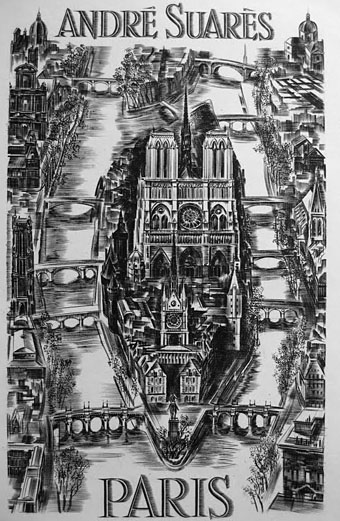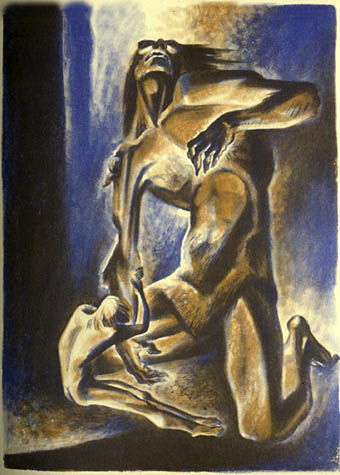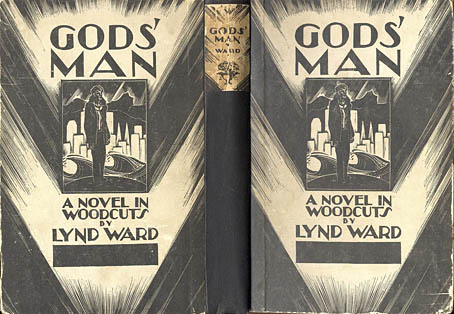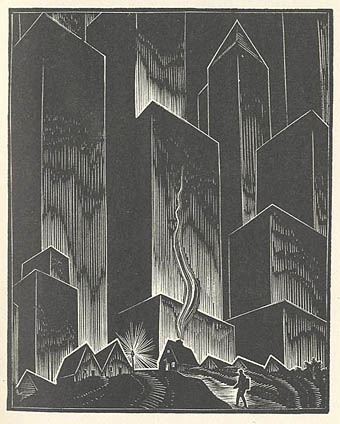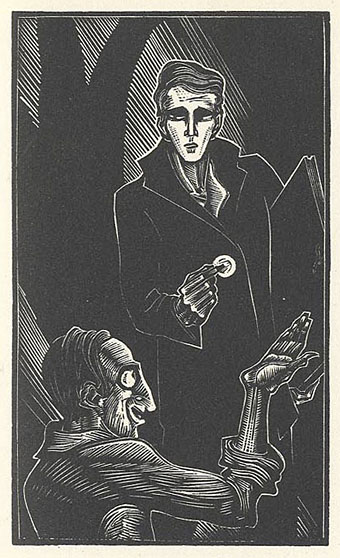A Folies Bergère dancer, c. 1909.
• Six Novels in Woodcuts: The Library of America publishes a boxed set of Lynd Ward’s works: Gods’ Man, Madman’s Drum, Wild Pilgrimage, Prelude to a Million Years, Song Without Words and Vertigo.
• RIP ace graphic designer Raymond Hawkey. Related: Raymond Hawkey: An eye for detail, and Hawkey’s James Bond cover designs from the mid-60s.
• The Record: Contemporary Art and Vinyl, an exhibition at Duke University, North Carolina, features work by 41 artists from around the world, from the 1960s to the present, using vinyl records as subject or medium.
The Île de la Cité, a steel engraving by Albert Decaris (1950).
• Fred Tomaselli will have a new exhibition of his work at the Brooklyn Museum next month.
• Socialist Monuments in Bulgaria photographed by Linda Ferrari.
• What would Howard think of the Mythos Art Dildo?
• Space is Process, a film about Olafur Eliasson.
• Thurston Moore’s Indie Books.
• Chris Colfer in a leather bar.
• Chrome! Helios Creed’s YouTube channel.


